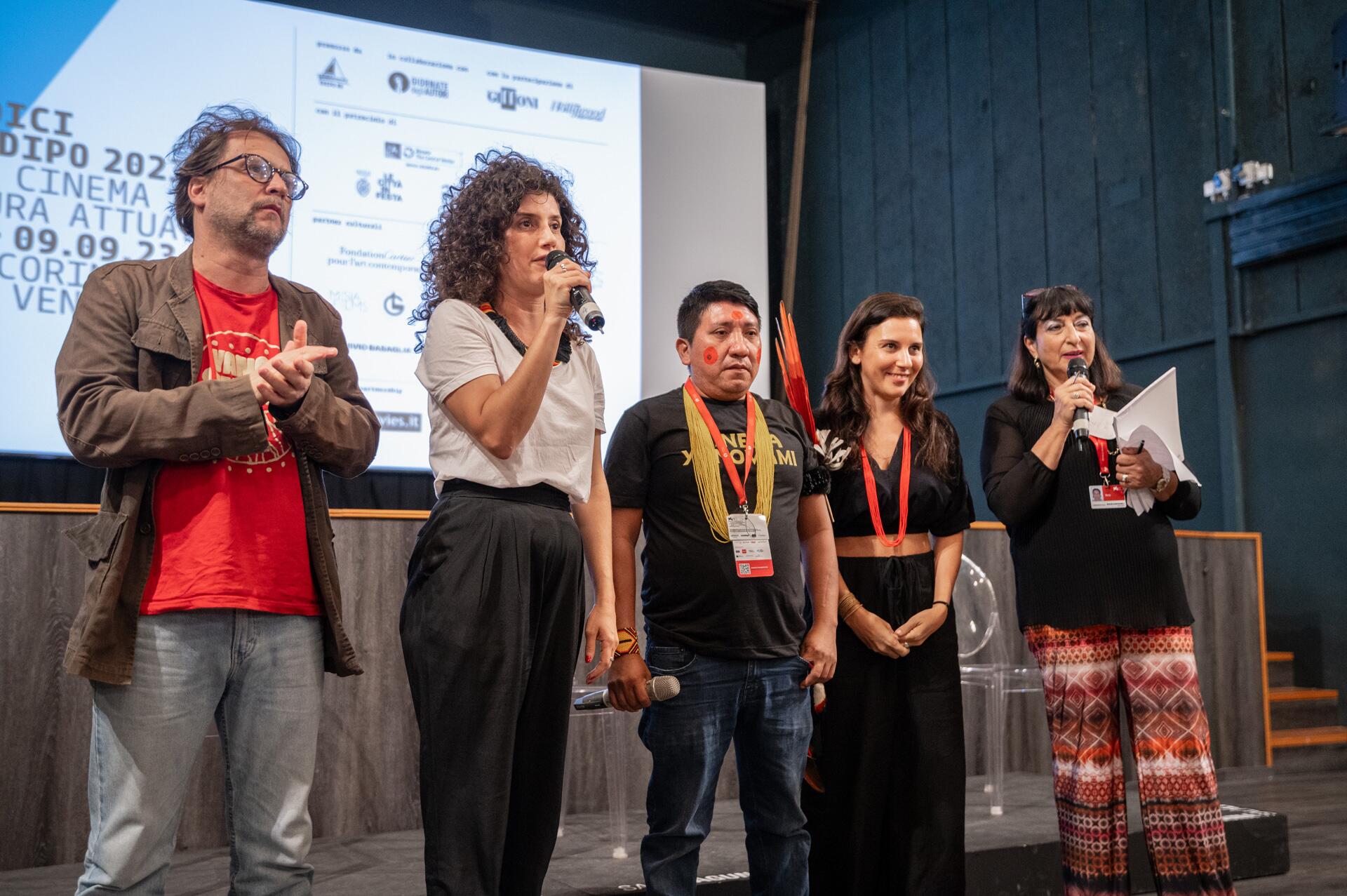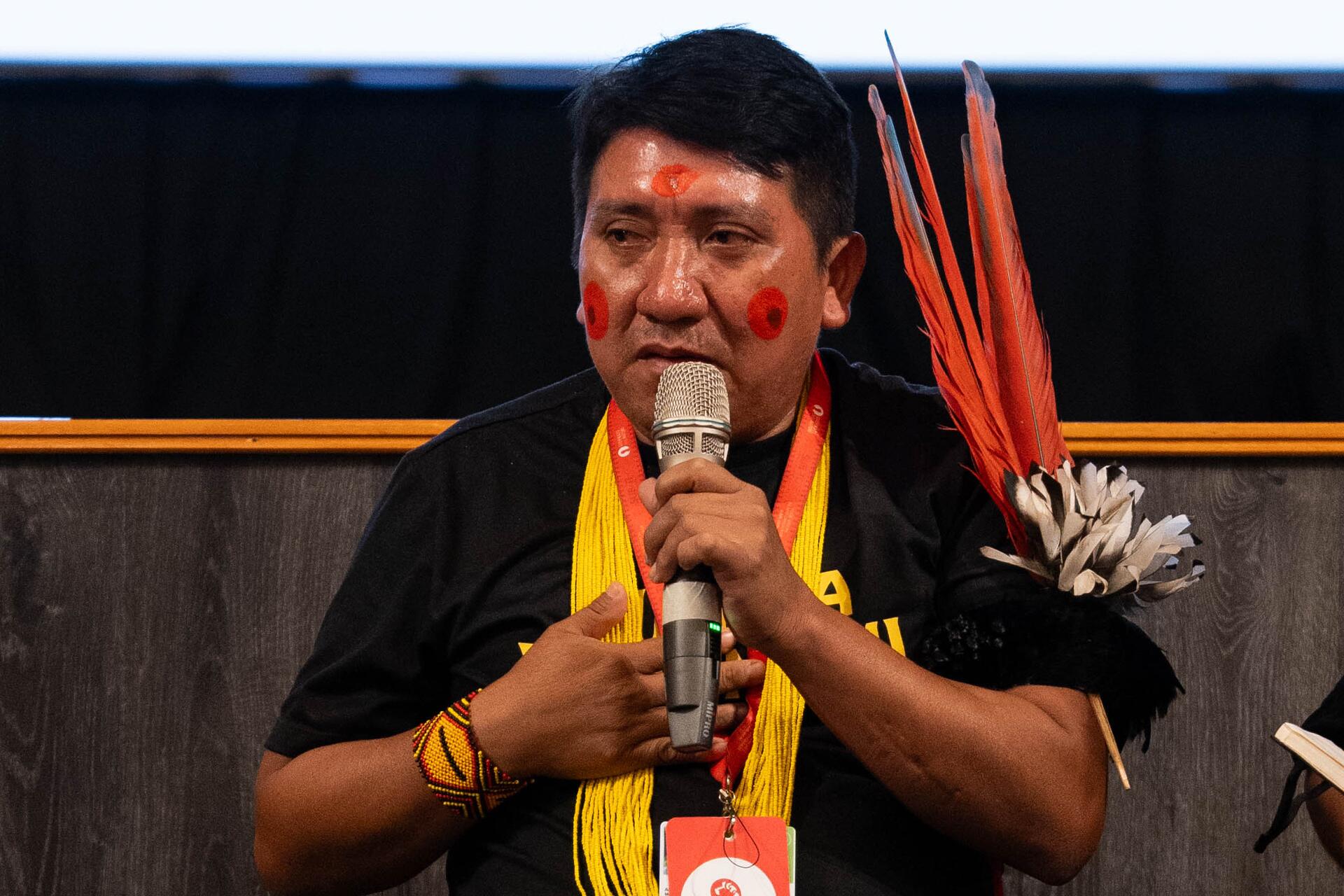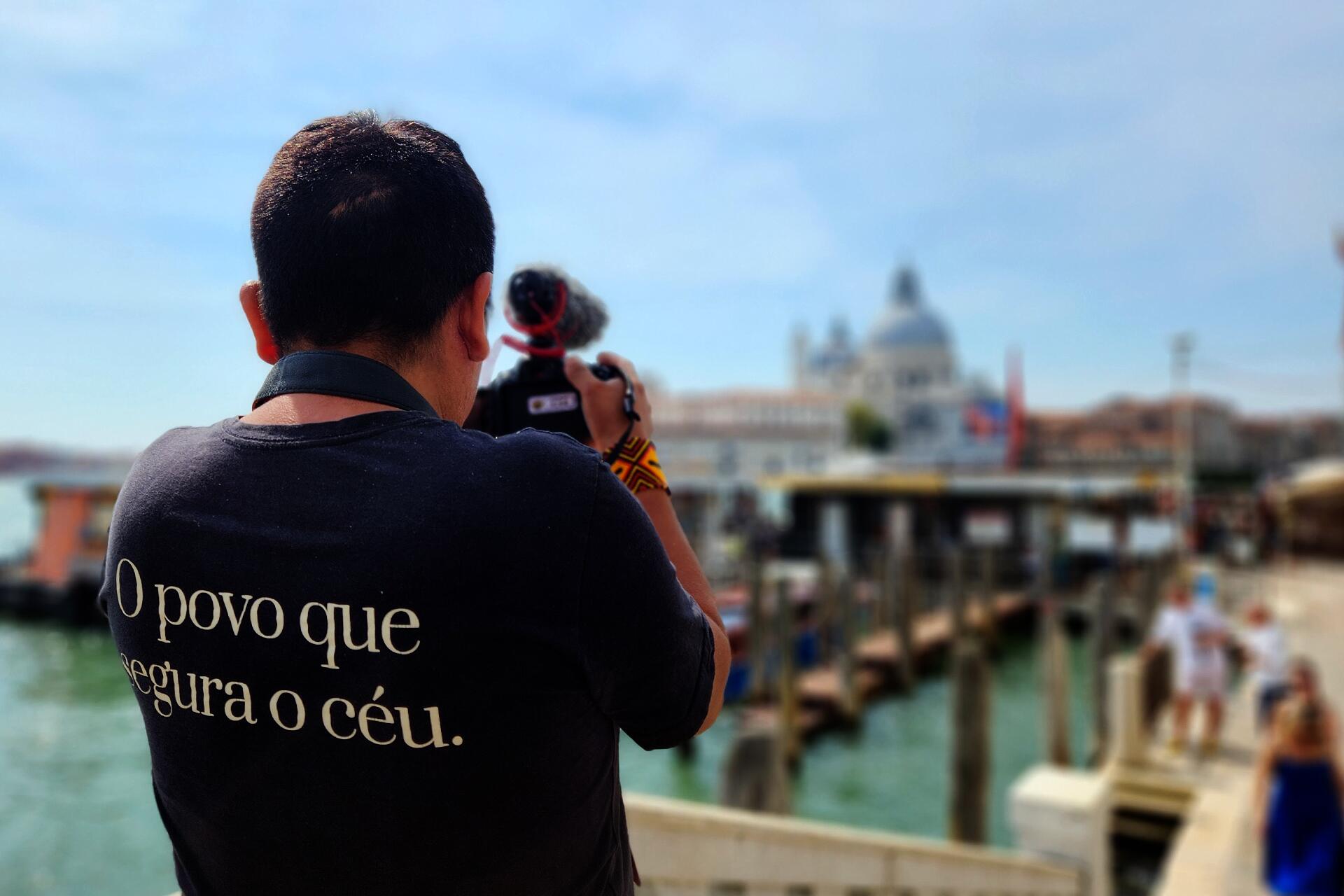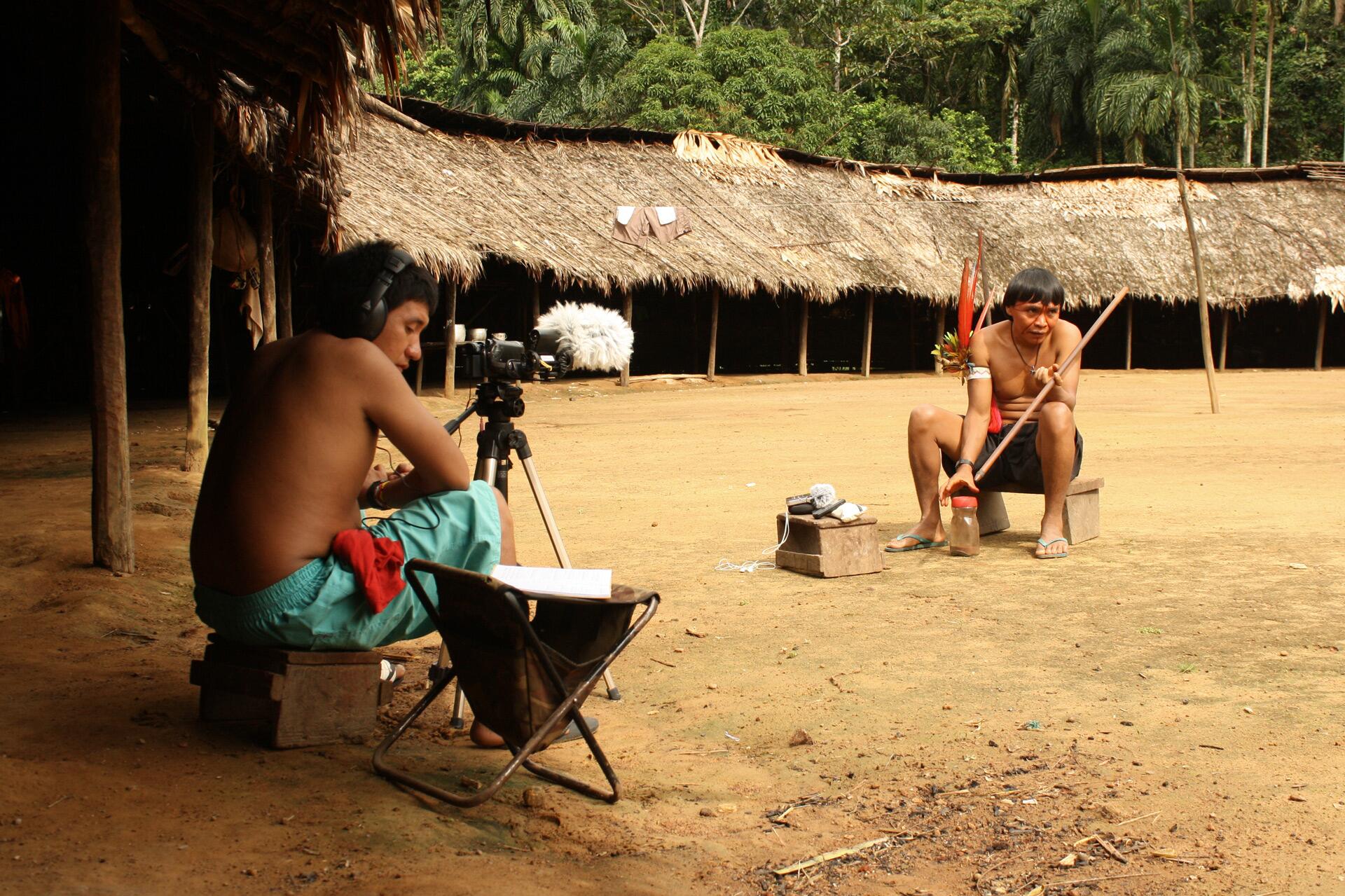The northern hemisphere had just sweltered through its hottest summer on record, possibly in the last 120,000 years, when Yanomami cinema arrived in Venice. As a translator of languages and sometimes of worlds, I was accompanying the Indigenous filmmaker Morzaniel Ɨramari. Sixteen-century-old Venice, Italy’s famous floating city, is now threatened more than ever by the enemy that we, non-Indigenous people, have created: climate disruption. When I told the Indigenous leader and shaman Davi Kopenawa about our upcoming trip to Venice and the risk that this city might vanish, submerged by rising seas, he asked me to pass along a message he hopes we will take seriously: “What you all call climate change is Urihi a në yuo—it is climate revenge; it is the revenge of the Earth.” According to Kopenawa, as destruction of the forest proceeds apace and older shamans pass away, the spirits who assist shamans, or xapiri, are growing outraged by the devastation of the planet and are exacting revenge on those responsible for it. Kopenawa says that in the future we will all either burn to death or drown.
There we were, atop the water, as cinema began opening bridges between Europeans and Yanomami, the Amazon and Venice, shamanism and technology. Films by Morzaniel Ɨɾamari, Edmar Tokorino, Aida Harika, Roseane Yariana, and Dário Kopenawa were featured as part of the program “The Eyes of the Forest,” held on September 4 as part of the 80th Venice International Film Festival, one of the world’s most prestigious motion picture showcases. Projected on the big screen, forest cinema is an invitation to get to know and imagine other ways of existing on this planet, should our species want to continue here.
In the Amazon, Yanomami shamans work to clean the forest-earth and hold up the sky, as depicted in the film Urihi Haromatimapë: Healers of the Forest-Earth, by Morzaniel Ɨramari. Yanomami shamans work tirelessly to heal a world that is sick of us, the napëpë—Yanomami for “non-Indigenous” or “enemies.”

Filmmakers Eryk Rocha, Gabriela Carneiro da Cunha, and Morzaniel Ɨramari and Indigenous specialist and translator Ana Maria Machado in Venice. Photo: Giornate degli Autori
I am in the company of Eryk Rocha and Gabriela Carneiro da Cunha, producers of three Yanomami shorts, and Morzaniel, my friend and work colleague for sixteen years—we’ve shared long hikes through the Amazon rainforest and cities around the world. He and I walk along Venice’s charming narrow streets and canals. The filmmaker, who was born and has lived his entire 42 years with his feet in the forest, is dubious about Venice. His outlook contrasts with the awe apparently felt by the thousands of tourists drawn from their homes to this city on the shores of the Adriatic. Venice is considered one of the most beautiful cities in the world, but the Yanomami man is surprised: “Why did the napëpë have the strange idea of making a city on top of the water?”
I tell him briefly about the Venetian strategy of building a city on the water to defend themselves from invasions by people they referred to as “barbarians.” Morzaniel remains silent and thoughtful; perhaps I haven’t convinced him. During the nights we spend in Venice, he tells me he has unusual dreams—and fears the xapiri of that unknown land. In a hotel room, his feet feel unsteady. He is also puzzled by the tourism that is swallowing up Venice. His ethnography of the place is the reverse of ours—we who the shaman Kopenawa calls the “commodities people,” we who apparently want to consume the city right until its end: “One day these waters will rise. When I went down to the water’s edge and saw all those tourists walking around there, I got worried and thought: Why does this make them happy? Why are they walking around looking happy, taking pictures, without thinking that one day the waters will rise and the people in the city won’t have any way to escape? These people that the napëpë call ‘tourists’ are people who travel. When they hear there’s a real beautiful city, those people who have made lots of money say: ‘I want to go there! I’ll go there on my vacation; I’ll throw away my money.’ That’s what they think, and they go. They wear real nice, sparkly clothes; they’re called rich. ‘Since we’re rich, since this city is real beautiful, let’s walk around looking nice!’ But these people don’t think; they just say that. They come from far away, arrive by plane, stay in expensive hotels, and throw money away. They go around taking pictures for no reason: ‘This city is real pretty, so I’m going to take pictures!’ I guess that’s how they think. But they don’t know how to look after it.”
In the eyes of Morzaniel, as a forest filmmaker, and Davi Kopenawa, as a shaman, thinking about the possibility of Venice disappearing means thinking about the xapiri who are taking revenge on the destroyers of the world. Based on calculations of rising temperatures and sea levels, some scientists say the city could sink by 2100, less than eighty years from now. As a member of the commodities people, I’ve always heard that science will find a solution so Venice doesn’t end up under water, so global heating doesn’t reach catastrophic levels, so we can continue living our comfortable lives while we watch on our cell phones as the planet collapses. The super rich, who are responsible for climate disruption, believe the answer is to flee Earth and colonize Mars, where they can perpetuate their lives and privileges, leaving behind the remains of a planet. Some like to say, “Man and science will find the solution to all this.” But no. The 20th century is over, taking with it human illusions about infinite power. We have to realize we are the problem, not the solution.
The revenge of the Earth that shaman Kopenawa talks about is no longer in the future. It is happening right now, and we are witnessing it. In August, at least 97 people died in a wildfire on Maui, Hawaii. According to UN estimates, 4,000 people died and another 9,000 are still missing in Libya, after a tropical storm triggered catastrophic flooding that devastated the city of Derna in September. Entire neighborhoods and buildings were swept out to sea while people lay asleep; it has been impossible to recover all the bodies from the same Mediterranean that laps at the shores of Venice. Kopenawa tells us that if we keep on destroying the forest, once there are no more shamans to hold up the sky—the sky we have filled with carbon dioxide—it will fall on our heads, and then nobody will be left.

Filmmaker Morzaniel Ɨramari and his colleagues address the public in Venice, with simultaneous translation into Italian. Photo: Giornate degli Autori
The rains that bathe the most densely populated regions of Brazil and part of South America depend on the Amazon. This moisture forms what we call “flying rivers,” the forest transpiring and pumping the water we need to live. Deforestation and burn-offs release vast amounts of carbon dioxide into the atmosphere, heating the planet and melting glaciers and the polar ice caps. This is what is elevating sea levels and what might also sink Venice, a city our children and grandchildren may never have the chance to visit. The future of Venice, like the future of humanity, depends upon our defending the Amazon, Yanomami shamans, and all the visible and invisible beings who people the forest and who, above all, recognize its beauty.
The shaman tells us we have the same origin as the Yanomami, but then we separated and forgot how important the forest is. We quit listening to our xapiri; we listen only to ourselves, while generating more and more goods and continuing to worship them. This passion for commodities is what makes the napëpë excavate the forest in a fanatic search for minerals, that makes them cut down the forest for its timber and set it afire to put in pasture land and soybean fields, all while we remain mesmerized by the junk we produce. The smoke from burning forests and pollution from factories and cars are making the sky’s lungs sick. In our deafening cities, we don’t know how to dream of spirits anymore.
The fragile state of Venice is emblematic of the new times ushered in by the Anthropocene. The actions of the commodities people pose a double threat to the city: a human-caused rise in sea level, which may submerge it, and the predatory tourism that brings people from around the world to “consume” Venice. Named a World Heritage Site by UNESCO, this small city of water, whose historical center now has a population of under 50,000, is invaded by 28 million tourists every year. Mass tourism always comes hand in hand with consumption and high rates of carbon emissions from aircraft and other means of transportation.

The canals of Venice through the lens of Morzaniel Ɨramari. Photo: Ana Maria Machado
In contrast with the commodities people crowding the Piazza San Marco under a scalding sun, glued to pictures on their cell phones, the shamans who appear in Morzaniel’s film as it plays on a movie screen in Venice listen to the voices of every tree, of the sky and the winds; they listen to në ropë, the power of fertility that makes plants grow; to poripoririwë, the being of the moon; and to so many other beings that we, non-shamans, cannot see or even imagine. For us, nature has become a commodity. The shamans show us there is another way of relating to the world, one that doesn’t destroy its biodiversity, its waters and trees. It is possible for us to be forest, together with the forest.
Indigenous peoples comprise 5% of the world population today but protect about 80% of its biodiversity. In Brazil, most demarcated Indigenous territories are green islands surrounded by vast pasturelands and soybean fields. It is imperative to demarcate and protect the lands of original peoples and reinforce laws guaranteeing their rights if we are to safeguard the future for all of us, along with Venice’s future. Imagining the end of the world seems an easier task for us than imagining the end of capitalism—or a radical change in the napëpë way of life, one that would let us be others, no longer consumers eager to convert the planet into merchandise, enthralled by all the junk we produce as we dirty the Earth.
We must listen to what the waters of Venice have to tell us and display the courage and creativity needed to reinvent our way of being and becoming in the world. We need to know how to be forest, be mountain, be river and ocean. We must learn how to be seeds, how to regenerate. We must learn from those who have lived through the end of the world many times over, surviving violent processes of colonization marked by wars and epidemics. More than ever, the future is Indigenous. And this is also the only chance for Venice, the city who watched shamans as they endeavored to hold up the sky in Morzaniel Ɨramari’s film.
Text: Ana Maria Machado (Indigenous specialist and translator)
Fact check: Plínio Lopes
Proofreader (Portuguese): Valquiria Della Pozza
Spanish translation: Meritxell Almarza
English translation: Diane Whitty
Visual editing: Lela Beltrão
Editorial workflow, copy editing, and layout: Viviane Zandonadi
Content editing: Eliane Brum (sower and director of SUMAÚMA)
TO LEARN MORE
+++The film Urihi Haromatimapë: Curadores da Terra Floresta (legenda em inglês)
Texto e fotos: Ana Maria Machado, indigenista e tradutora
Checagem: Plínio Lopes
Revisão ortográfica (português): Valquiria Della Pozza
Tradução para o espanhol: Meritxell Almarza
Tradução para o inglês: Diane Whitty
Edição de fotografia: Lela Beltrão
Fluxo de edição, estilo e montagem: Viviane Zandonadi
Edição de conteúdo: Eliane Brum (semeadora e diretora de SUMAÚMA)

Yanomami Indigenous Territory, Demini village, Brazilian Amazon: Morzaniel interviews the shaman Tenose for the film Urihi Harmatimapë: Healers of the Forest-Land. Photo: Ana Maria Machado





